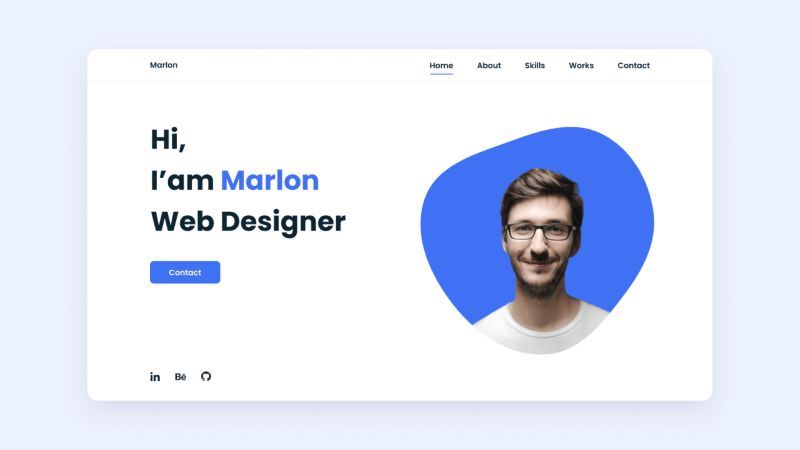

Let's learn more about this topic below with Iron Snout. Building a portfolio website for free is an excellent way to showcase your work and skills to potential clients or employers. This guide will walk you through the process step by step.
Creating a portfolio website doesn't have to be expensive or complicated. With the right tools and knowledge, you can build a professional-looking site without spending a dime.
When it comes to building a free portfolio website, you have several options to choose from. Each platform offers unique features and benefits, so it's essential to consider your specific needs and preferences before making a decision. Some popular choices include WordPress.com, Wix, and Google Sites.
WordPress.com is a versatile platform that offers a wide range of customization options. It's user-friendly and provides numerous free themes to choose from. Wix, on the other hand, is known for its intuitive drag-and-drop interface, making it easy for beginners to create stunning websites without any coding knowledge.
Google Sites is another excellent option, especially if you're already familiar with Google's suite of tools. It integrates seamlessly with other Google services and offers a straightforward website-building experience. Whichever platform you choose, make sure it aligns with your goals and skill level.
Once you've selected a platform, it's time to focus on designing your portfolio website. The design should reflect your personal brand and showcase your work in the best possible light. Start by choosing a clean and professional theme that complements your content and style.
Consider the overall layout of your website. A well-organized structure will make it easy for visitors to navigate and find the information they're looking for. Include a homepage that introduces yourself and your work, a portfolio page to showcase your projects, and a contact page for potential clients or employers to reach out to you.
Your homepage is the first thing visitors will see, so it's crucial to make a strong first impression. Include a brief introduction about yourself and your area of expertise. Consider adding a professional headshot or a visually appealing banner image to make your site more personal and engaging.
Incorporate clear and concise navigation menus to help visitors easily explore your website. Include links to your portfolio, about page, and contact information. Remember to keep the design clean and uncluttered, focusing on the most important elements that showcase your skills and personality.
The portfolio page is the heart of your website, where you'll display your best work and projects. Organize your projects in a visually appealing manner, using high-quality images and concise descriptions. Consider categorizing your work if you have a diverse range of projects to showcase.
For each project, provide context and explain your role, the challenges you faced, and the solutions you implemented. This information helps potential clients or employers understand your problem-solving skills and creative process. If possible, include testimonials or client feedback to add credibility to your work.
To ensure your portfolio website gets discovered by potential clients or employers, it's essential to optimize it for search engines. Start by choosing relevant keywords that describe your skills and services. Incorporate these keywords naturally throughout your website's content, including page titles, headings, and meta descriptions.
Create high-quality, original content that provides value to your visitors. This could include blog posts, case studies, or tutorials related to your field of expertise. Regularly updating your website with fresh content can help improve your search engine rankings and keep visitors coming back for more.
Ensure your website is mobile-friendly, as search engines prioritize mobile-responsive sites. Most free website builders offer responsive themes, but it's always a good idea to test your site on various devices to ensure it looks and functions properly across all screen sizes.
Website load speed is crucial for both user experience and search engine optimization. Optimize your images by compressing them without sacrificing quality. Avoid using too many large files or complex animations that can slow down your site's performance.
Utilize caching plugins or features provided by your chosen platform to improve load times. These tools store static versions of your pages, reducing the time it takes for your site to load for repeat visitors. regularly test your website's speed using tools like Google PageSpeed Insights and make necessary adjustments to enhance performance.
To make your portfolio website more functional and user-friendly, consider adding some essential features. A contact form is a must-have, allowing potential clients or employers to easily get in touch with you. Most free website builders offer built-in contact form widgets or plugins that you can easily add to your site.
Include social media integration to help visitors connect with you on various platforms. This can also help expand your online presence and network. Add social media icons in your website's header or footer, linking to your professional profiles on platforms like LinkedIn, Instagram, or Behance.
Consider implementing a blog section on your website. This allows you to showcase your expertise, share industry insights, and provide valuable content to your audience. Regular blog posts can also help improve your website's search engine rankings and establish you as an authority in your field.
Strategically place call-to-action (CTA) elements throughout your website to guide visitors towards desired actions. This could include buttons or links encouraging visitors to view your portfolio, download your resume, or contact you for inquiries. Make sure your CTAs are clear, concise, and visually appealing to attract attention and encourage engagement.
Consider adding a newsletter signup form to build an email list of interested individuals. This can be a valuable tool for keeping in touch with potential clients or employers and sharing updates about your work and services. Many free email marketing tools integrate seamlessly with website builders, making it easy to set up and manage your newsletter.
Once your portfolio website is up and running, it's important to maintain and update it regularly. Keep your portfolio current by adding new projects and removing outdated ones. This shows potential clients or employers that you're actively working and improving your skills.
Regularly review and update your website's content to ensure it remains accurate and relevant. This includes updating your bio, skills, and any other information that may change over time. Fresh content not only keeps your website interesting for visitors but also helps with search engine optimization.
Monitor your website's performance using analytics tools. Most free website builders offer built-in analytics or integrate with services like Google Analytics. These tools provide valuable insights into your website's traffic, user behavior, and popular content. Use this information to make data-driven decisions about improving your site and catering to your audience's interests.
Seek feedback from colleagues, mentors, or trusted professionals in your field. They can provide valuable insights on how to improve your portfolio website and make it more appealing to potential clients or employers. Consider implementing their suggestions to enhance your site's effectiveness.
Encourage visitors to leave comments or feedback on your work. This can help you understand how your portfolio is perceived and identify areas for improvement. Be open to constructive criticism and use it as an opportunity to grow and refine your skills and presentation.
Building a portfolio website for free is an excellent way to showcase your talents and attract potential clients or employers. By choosing the right platform, designing an engaging site, optimizing for search engines, and maintaining your content, you can create a professional online presence that highlights your skills and achievements. Remember to keep your website updated and seek feedback to ensure it continues to serve its purpose effectively. With dedication and creativity, your free portfolio website can become a powerful tool in advancing your career and attracting new opportunities.